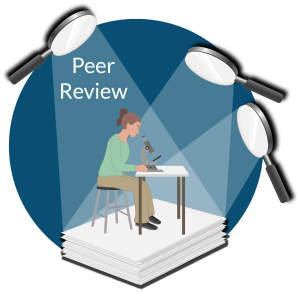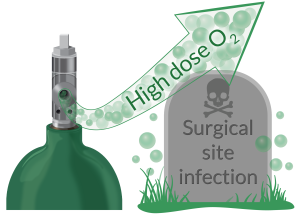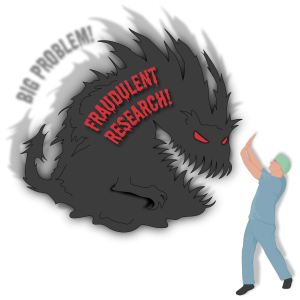CRNAs look to import the most recent clinical evidence into their practice, the goal being to provide the patient with the most up-to-date, effective, and safe care. It’s a target we aim for. We partly base our working knowledge on reports read in nursing and medical journals that have navigated the arduous path of peer review.

Likewise, new drugs, techniques, and advancements we learn about at national and regional conferences are vetted by program committees that invite capable and authoritative clinician scholars to present. We are confident that what is presented is solid.
Just how confident should we be?
While the vast majority of scholars strive for accuracy, a healthy dose of skepticism is essential due to the possibility of academic misconduct and fraud in medical research.
| Table of Contents:
- There Are Concerns
- Are Issues of Fraudulent Research Getting Worse or Getting Better?
- Fraudulent Research: A Malpractice Issue For the CRNA?
Examples of scientific misconduct and academic deceit
The last decade right up to the present has been a challenging time for scientific integrity. Clinicians likely view issues of failed scientific integrity as isolated, rare, and insignificant. Time has proven that naivete to be risky. Rather, the problem is now recognized as systematic, malignant, and vexing. Anesthesiology is a particularly fertile domain for scientific misconduct for unclear reasons.
Medical malpractice case of J Boldt
Consider the anesthesiologist J Boldt, a prominent specialist in IV fluid management. CRNAs using colloids and hydroxyethyl starch solutions do so because of the evidence for their effectiveness that Boldt demonstrated with his publications and international speaking engagements. Of the 102 studies that Boldt published, 90 have been retracted as fraudulent, the others questionable. What were the consequences of his scientific misconduct? Boldt was found guilty of misconduct and stripped of his academic and clinical positions. Most concerning is that his fraudulent publications influenced the care of tens of thousands of patients where overuse may have prompted death, causing some societies to ask for a ban on its use.
Medical malpractice case of Y Fujii
Over a relatively short period, another anesthesiologist, Y Fujii, published an astonishing 249 papers, most of which were proven fake and others highly suspicious. His major focus was antiemetics. And let’s not forget anesthesiologist S Reuben, whose fraudulent work influenced how many of us treated postoperative orthopedic pain. Dr. Steven Shafer, editor-in-chief of Anesthesia & Analgesia, notes that Reuben’s work influenced the care of millions of patients and led to the sale of billions of dollars worth of COX-2 inhibitors with a significant side effect profile. Reuben lost his license and went to jail.
Medical malpractice case of M Schietroma

We recall a 2016 recommendation from the WHO to use 80% O₂ for intraoperative ventilation to reduce SSI, based largely on work led by an anesthesiologist, M Schietroma. Third-party analysis revealed multiple incidents of scientific misconduct, plagiarism, ethical breaches, and outright fabrication. Additional work concluded that 38 of his 40 papers had severe data integrity issues. Tens of thousands of patients received high dose O₂ for no benefit and with the potential for harm.
In the NBA, we have the most points scored (currently held by Lebron James with 39,000 within his potential reach). There is an equivalent leaderboard for fraudulent research, with Fujii and Boldt currently in 1st and 2nd place. But hold on, another anesthesiologist is vying for the sheer volume of fraud. Meet H Ueshima, proven guilty of publishing 142 articles known to be fraudulent, and all of his publications retracted by the journals where his lies and deceit appeared. Each of these scoundrels’ deceits numbered in the triple digits! Thankfully, we are unaware of a CRNA researcher implicated in fraudulent activity.
Are issues of fraudulent research getting worse or getting better?
It depends on your point of view. The biomedical world is getting better at identifying fraud and misconduct. Just 10-15 years ago, retracted articles each year numbered in the double digits. In recent years the average is about 2,000. But research viewed as “problematic” but not proven fraudulent is likely even greater. Then there are the predatory journals that publish 2nd or 3rd rate papers, often without peer review, charging authors a publication fee. These may go on to be cited!

What are we to believe about scientific deceit?
This is an important concern because retracted publications may continue to be read, impact patient care, and be referenced by others, a process termed “publication metastasis.” Exemplifying the grievous nature of the problem is that scientific misconduct is now its very own discipline, attracting scientists, sociologists, economists, and philosophers to the ranks of those who study it.
Considering how scientific misconduct can occur
Let’s introduce someone likely unfamiliar to you, an icon of fraud detection who reminds us of why we should care, Dr. Ioannidis. He is on record as concluding, “Most research findings are false.” While exaggerating to draw attention to the issue, in addition to his concerns about fraud, he cites other reasons, including:
- Studies with too few patients claiming absolute proof
- Exaggeration of weak effects
- Funding sources encourage reporting only favorable results
- Lax research standards weakening reported findings
- “Hot” topics generate competition, and a “desire to be first” can taint reports
- Over-emphasis on statistical instead of clinical significance
- Researchers letting bias—or worse—motivate their conclusions
Yeah, but why does falsified data in research occur?
The zeal for credit or financial reward for something can intoxicate some by driving them to engage in unscrupulous behaviors. Recalling a philosophy course taken long ago, an APEX crew member recalled Plato arguing that thumos (honor/esteem) can easily push aside nous (finding truth). Some fall for the sin of seeking credit when it is not deserving. Others may feel pressured to publish to gain promotion or job security. And then there are the self-aggrandizers.
Fraud in medical research: a malpractice issue for the CRNA?
It is reasonable to ask if we might be liable for performing interventions based on fraudulent research. This is not likely to be an issue for a couple of reasons. First, basing interventions that are widely practiced and based on published research in major journals demonstrates engaging in evidence-based practice, even if fraud is later revealed.
Secondly, the practices are likely to have biological plausibility–that is, they make sense. The diabolical generally pursue interventions that do not raise too many red flags.
Additionally, fraud is often detected many years after it is performed where the statute of limitations has run its course. That said, an intervention that proves disturbing or raises concern of any kind, and is not widely embraced and practiced by others, should be reconsidered. Clinical care is by definition, conservative. Being a “too-early” adopter of a practice that runs counter to a gold standard may put the CRNA in legal peril.
Wow—a BIG problem in search of a solution.
While we can assess part of the blame to journals and their editorial boards, researchers who are determined and sophisticated in engaging in scientific misconduct can be very difficult to catch. Often, a colleague or trainee observes and reports the scientific fraud and misconduct, or it may be suspected and proven when replication fails to demonstrate the initial claims.

There are concerns that artificial intelligence and programs like ChatGpt may greatly accelerate the incidence of fraudulent research. We need computerized sleuth programs that identify falsification—currently, this is unmet. The scientific community, and its journals, need to build a better safety net.
What are CRNAs to do? We suggest a couple of things. First, we should be careful and conservative in making major practice decisions based on research unless the findings are verified by large replication studies and/or endorsed by our national specialty organizations. Second, be a critical reader as you consider what the researchers recommend and how strong their evidence is.
As CRNAs ourselves, we understand the challenge of fitting CRNA continuing education credits into your busy schedule. When you’re ready, we’re here to help.







